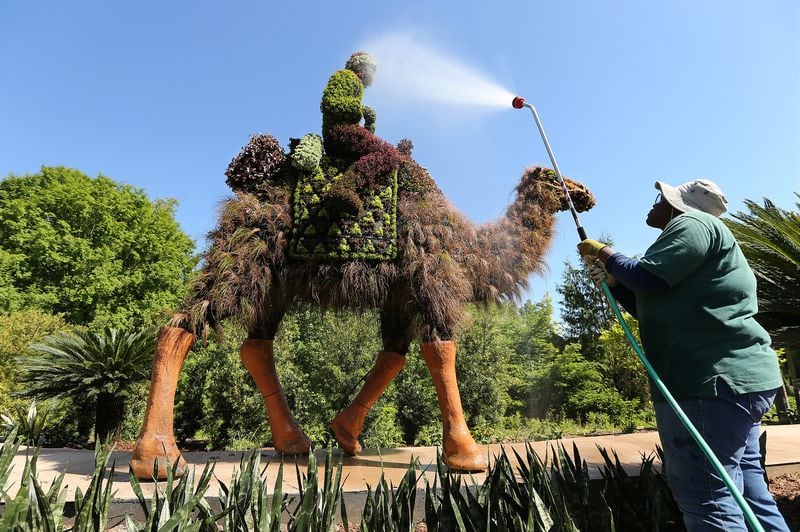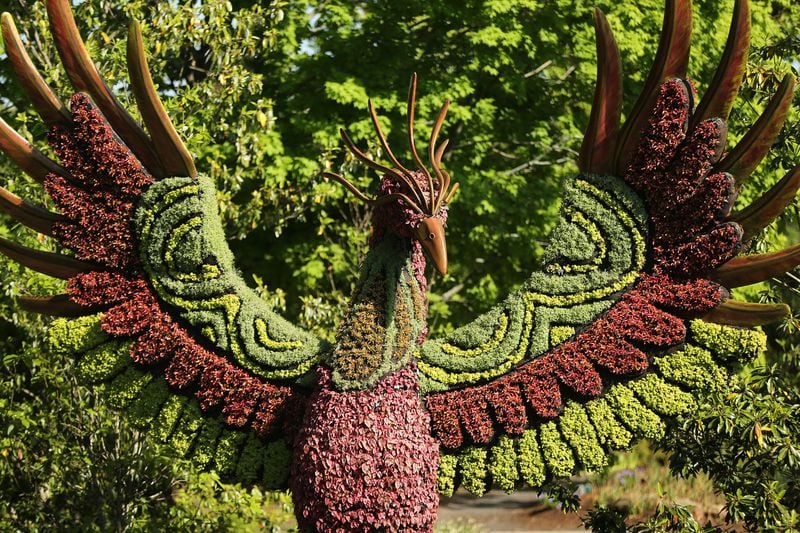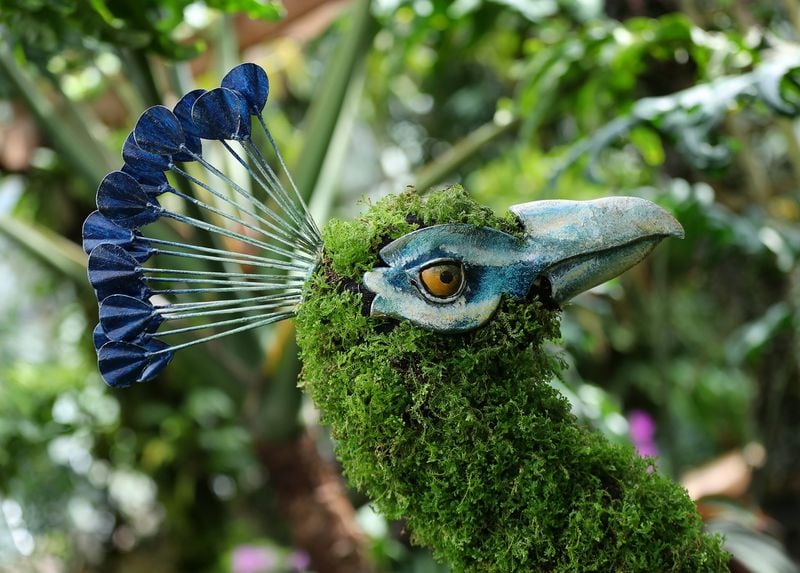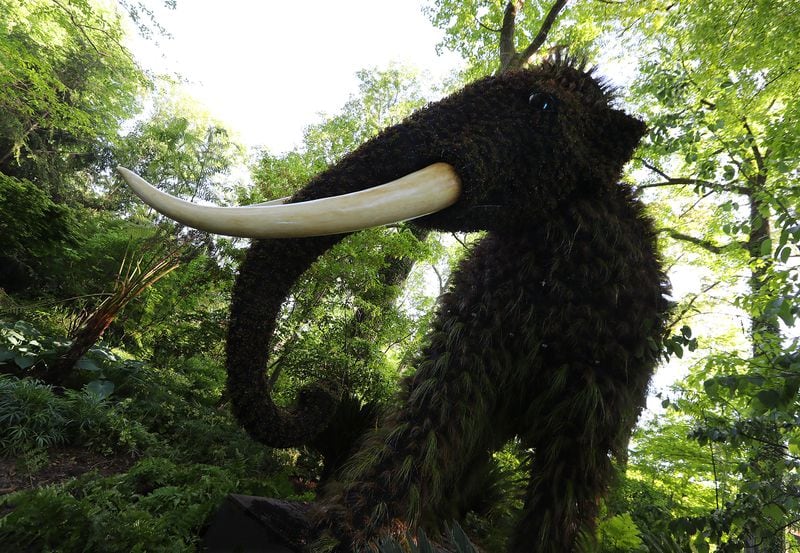The Atlanta Botanical Garden is growing mythological creatures.
A fire-breathing dragon, a mermaid, a flying horse, a woolly mammoth and a brace of other beasts are taking root at the Midtown attraction, and will be flowering through much of the rest of the year.
They are part of the "Imaginary Worlds" exhibit, opening May 5, an offering of the ancient art called "mosaiculture," which the garden previously presented back in 2013 and 2014 to great public acclaim.
When the garden installed the living creations in 2013, it was the first time such art had been displayed in the United States on that scale. Most of the creatures sprouting throughout the garden in the current display are brand-new to Atlanta; many are colossal, and dwarf the sculptures from the previous exhibits.
Credit: ccompton@ajc.com
Credit: ccompton@ajc.com
“We loved it, and the people loved it,” said Amanda Bennett, manager of the display gardens and the boss of these fantastical creations. “We loved seeing what plants can do. They’ve been begging us to bring it back.”
These plants work overtime. They masquerade as skin, hair, scales, fur and feathers, duplicating the look of the fluffiest puppy dog, or the graceful drape of a mermaid’s tresses.
Bennett said, “It looks like magic but there’s a lot of dirty hard work that goes into it.”
The Earth Goddess, a 25-foot-tall female deity with one hand cupping a waterfall, became a permanent part of the garden’s landscape after its original installation during those first two shows.
Credit: ccompton@ajc.com
Credit: ccompton@ajc.com
“The hardest part to keep looking good is her chin,” said Bennett. Since water follows gravity, areas that are on the underside of the sculptures (like the Earth Goddess’ chin) have to be watered sometimes three times a day to keep them hydrated. Many of the displays have been built with internal irrigation systems that keep them watered from the inside.
The Botanical Garden collaborates with a Montreal company called Mosaiculture International to design the creatures, and the Canadian company ships the empty metal frames to Atlanta.
Those frames are stuffed with fabric bags full of mulched bark, a soil-less bedding material. The garden’s artists then poke holes in the fabric surface, and insert plugs of grasses or succulents or bushy evergreens.
“It needs to be kind of random,” said Jim Smith of the Botanical Garden, demonstrating the technique on a sculpture of a 19-foot woolly mammoth. “We don’t want any straight lines; we don’t make any patterns.”
During work in greenhouses outside town, those frames were studded with more than 200,000 plant plugs during the chilly late winter months, then were moved to the garden as the weather warmed.
Indigenous plants, many of them mossy or tiny-leafed ground covers, work best to create the surfaces of these sculptures, such as the variegated Alternanthera that forms the folds of the Earth Goddess’ hair.
Lysimachia nummularia, also called creeping Jenny, forms the bright green tresses of the mermaid who lounges beside Howell Fountain. Silver Pilea (a genus of flowering plants in the nettle family) form the mermaid’s face and hands, and a scaly-looking Alternanthera covers her tail.
Credit: ccompton@ajc.com
Credit: ccompton@ajc.com
Some of the plants are clipped with sheep shears to within millimeters of the surface of the sculptures, creating a smooth, continuous look. Others are allowed to grow out, such as the grasses that form the fur of the Shaggy Dog.
The organizers can tell which sculptures are the favorites by seeing which ones show up on Instagram most often. (They’re busy creating niches near the most popular sculptures where visitors can take selfies.)
There are also mosaiculture sculptures at the Gainesville Botanical Garden, including an ogre, panda bears and frogs.
The exhibit continues through Oct. 28.










